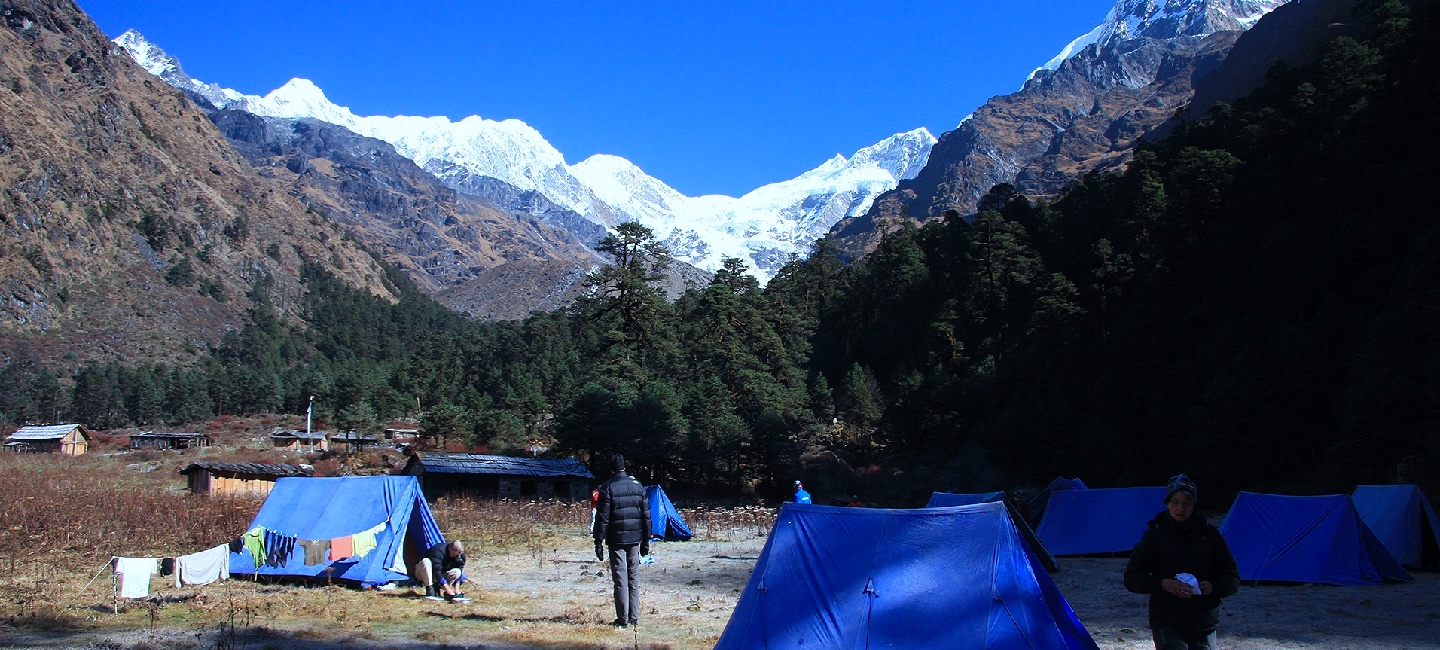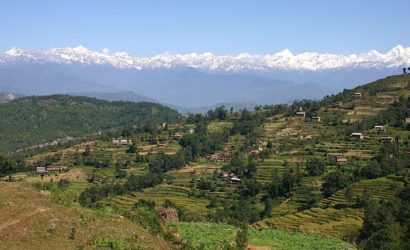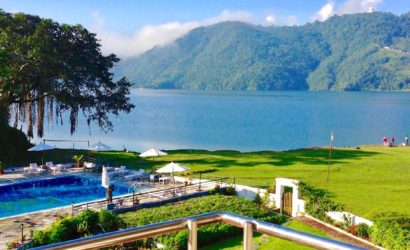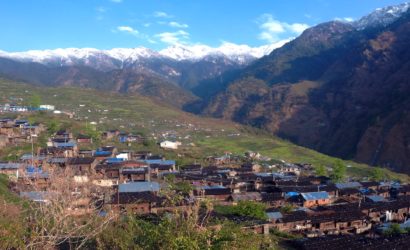The Numbur Cheese Circuit Trek route has been developed with the initiation of TAAN and many local organizations especially for the real adventure seekers to fulfill their needs of eco-trekking trails among the congestion of commercialized trekking trails. The ‘Numbur Cheese Circuit (NCC)’ trail is situated in Ramechhap district, some 190km east of the capital city Kathmandu. It is a 19-day circuit trek connecting two beautiful river valleys; Khimti and Likhu in the lap of Everest and Rolwaling region.
The Numbur Cheese Circuit Trek is named in honor of the virgin peak Numbur Chuli (6959m) and one of Nepal’s first Yak Cheese factories, established in 1957. The Numbur Cheese Circuit trail offers its visitors the breathtaking views of the majestic Himalayas including Everest range, Numbur Chuli, Gaurishankar, Jugal and Langtang Himalayan range.
The virgin and vibrant Sherpa culture is another major attraction of the trail and the trek can also be combined as eco-lodge camping trek with the unique home-stay experiences among Sherpa communities. The Numbur Cheese Circuit trekking is more potential for the trekkers who are looking for ‘off-the-beaten path’ treks.
The High Himalayan lakes, revered by pilgrims including Panchpokhari, Jatapokhari, Bhalepokhari, Dudhpokhari and richness in biodiversity are also among the prime attractions of Numbur Cheese Circuit trail. Many pristine monasteries lie along the trail in Lachhewar, Kyama, Gumdel, Bhandar and Thodung offering spiritual delights.
Numbur Cheese Circuit Trek: Highlights
Numbur Cheese Circuit could be a best choice for wilderness seekers in comparatively less-visited regions looking for a circuit trekking package. Together with exuberant cultural rituals, visitors can experience the peaceful natural environment in two hidden valleys.
Trekkers can also reach Numburchuili’s south-facing glacier and hike through deep river gorges, terraced rice fields, temperate and sub-alpine forests, elevated summer pastures and experience a glacier walk through the Lhiku valley.
Soft to moderate eco-camping, rock climbing, high Himalayan wetland observation, wilderness walking through the deep forest, glacier walking, base camp trekking, high pastures and Yak cheese experience, Sherpa and Newar cultural experiences, monastery spiritual rests, study of biodiversity and climate change, interaction with typical rural people through home-stay, and if organized well in advance, some adventure sports such as rock climbing and mountain biking would be some of the tourism activities featured in Numbur Cheese Circuit.
The views of the mountains are sensational and the Panchpokhari Pass (4605 m) and Gyajo La Pass (Thulo Lapcha) (4880m) require the most spectacular passes with views from north to Tibet and south to Pikey Peak.
Upon your arrival in the Kathmandu airport after completing your custom formalities Visa, etc. pick up your luggage and look for our airport representative from Himalaya Discovery, who will display your name on the board at the arrival gate. You will be greeted by our representative and transferred to the hotel by private tourist vehicle. Overnight at hotel in Kathmandu.
Today is free for sightseeing in Kathmandu. You may wish to visit Durbar Square in the heart of the old city where the old Royal Palace, with its intricate woodcarving is located. The whole area is a maze of temples and images. Leading away from the square in all directions are narrow alleys, full of the most amazing variety of shops and stalls.
Some of these landmarks are considered World Heritage Sites including the historic Bhaktapur Durbar Square, the famous ‘Monkey Temple’ Swayambhunath and Buddhists shrine Buddhanath which is one of the largest Stupas in the world.
There will also be a full trip briefing today with gear check. In case you need to hire or buy equipment locally there will be time to do this today. Overnight at hotel in Kathmandu.
It takes 6-8 hours to drive from Kathmandu to Shivalaya. The road is well paved with fine views. Shivalaya is gateway for the Numbur Cheese Circuit. It is located on the picturesque Khimti River.
The trail from Shivalay to Khahare runs up and down along the valley side through terraced fields, dips to cross the river and then winds steeply up the cliff on the other side. Khahare is a small villages which is inhabited only during winters by the house owners. During the summer they move to cattle pastures bordering Tibet tending to their yaks and Chauris.
Panipakakha is the first campsite on the trail route. It has a relatively flat camping area carved into the hillside with a basic two room hut. There is space sufficient only to house 5-10 tents.
In the course, the trail crosses a tiny Sherpa village of Phokte. The trail ascends through the rhododendron forest to the summer pasture of Maanedanda The campsite at Maanedanda is equipped with a basic cooking shelter and area for tents. It offers good views in clear days.
Along the riverside, the trail climbs to Jata Pokhari. With the increasing altitude we move through alpine pastures to scrubby forest of sunpati –a rare mountain herb. As we reach before a dramatic waterfall we get the signal of our arrival to Jata Pokhari. Lake Jata Pokhari lies in the lap of Mt. Numburchuli.
The lake is a popular pilgrimage in Ramechhap where thousands of pilgrims gather to celebrate holy festival Janaipurnima during the month of July. The trail continues and after a short walk you reach to Panch Pokhari. There are five small lakes, known as Panch Pokhari. The view of Annapurna South dominates the Western horizon of Panchpokhari.
Today we will the cross pass (4600meters) and descend to Thare.
The only suitable term to call Likhu Khola valley is complete wilderness. Your trek continues with the marvelous mountain views that extends north into Tibet.
Following the trail, traditionally used by local Sherpas,to bring yaks across the mountain, we cross Thulo Lapcha pass at 4838m and make a steady walk along the Likhu Khola valley to reach pastures of Ngeju. Ngeju is nested at the foot of iceall tumbling from the sacred summit of Numbur.
Kau Gumba, an ancient Buddhist Shrine is enclosed by a great sweep of high rock and snow peaks above tree line of the valley. Dudhkunda –the Milky Lake rests in the heart of the basin. The lake is surrounded by tumbling glaciers and large moraines.
Rest and explore around Ngeju.
Lahaksewar is simply known as Sewar which is the most beautiful Sherpa villages in the upper Ramechhap region. The village welcomes you with its amazing landscapes, culture and hospitality. Sewar people has still maintained their traditional lifestyle.
The trail from Lahksewar to Kyama descends through deep forest of Kyama with eye catching view of Pathibhara and Numberchuli.
Gumdel is a tiny Sherpa village around a large Buddhist Stupa with the gleaming Number Chuli as the backdrop
The rest of the time is fre. Overnight at hotel in Kathmandu.
Today is rest and relax throughout the day. If you get interested to take some gifts from Nepal for friends and relatives, visit to some nearby shops or go out in Thamel for typical Nepalese goods which can be assisted by our guide or you can do it yourself too.
In the evening we will have a farewell dinner in a traditional Nepalese restaurant with cultural performances. Overnight at hotel in Kathmandu.
The trip concludes, our airport representative will drop you to the Kathmandu International Airport for your flight departure from Nepal.









